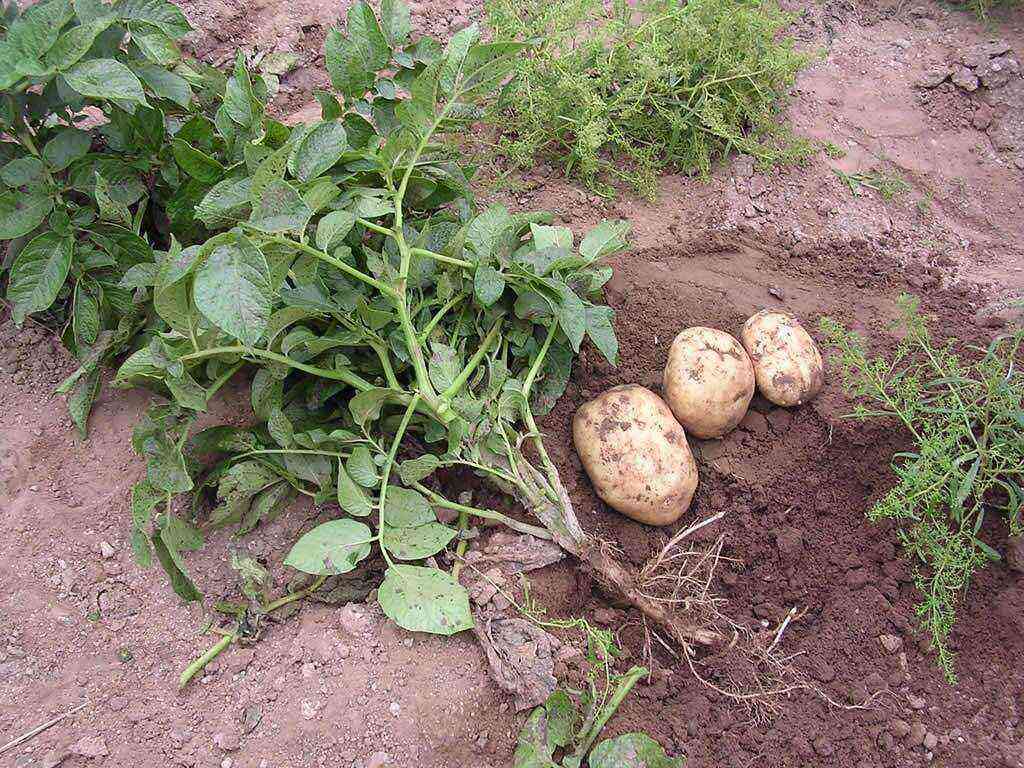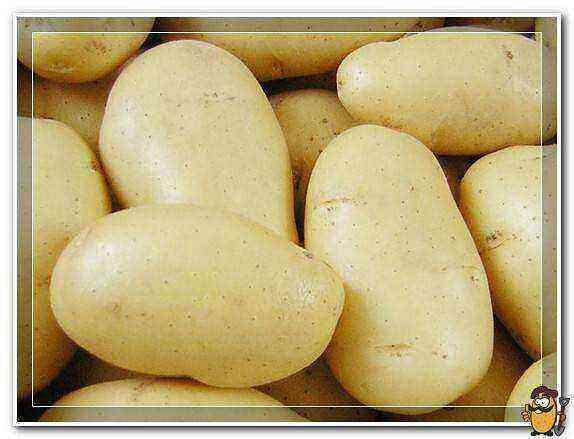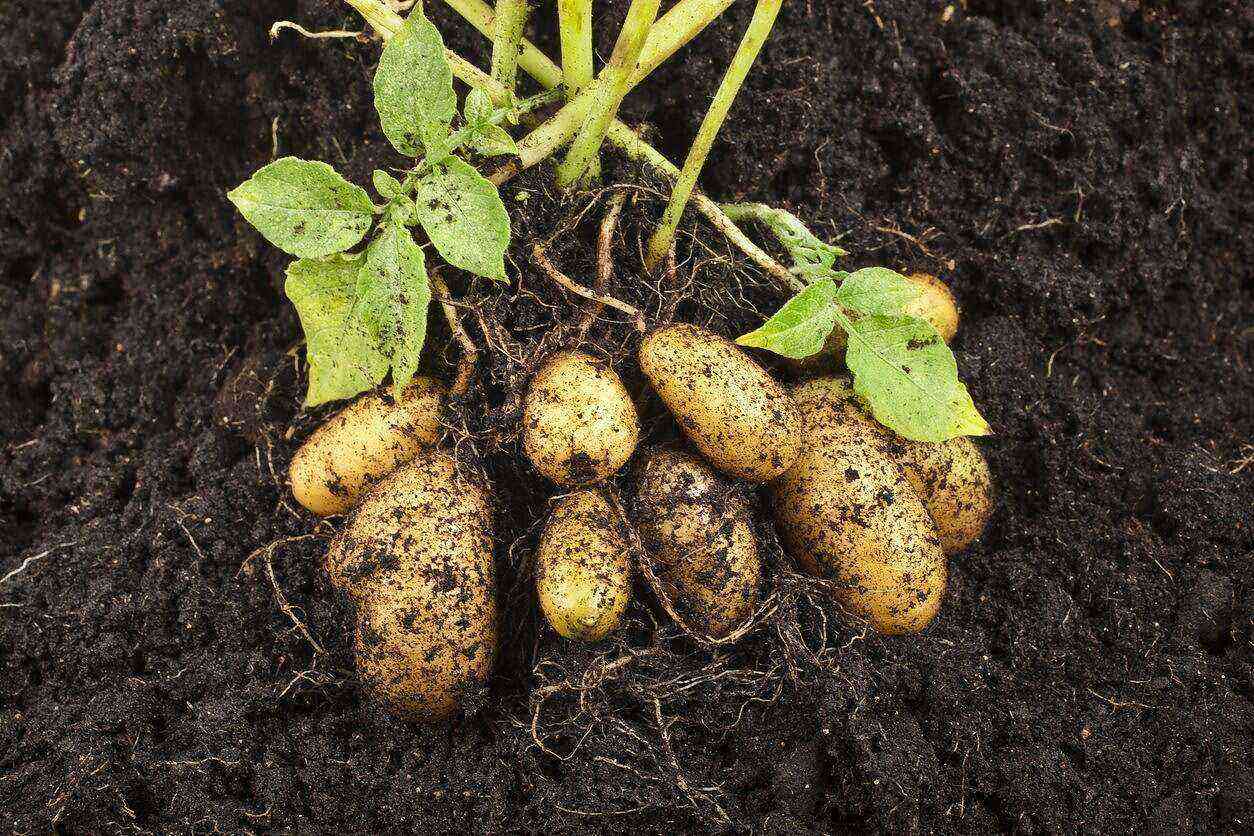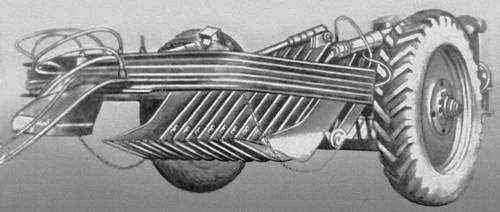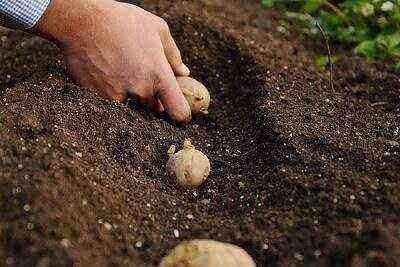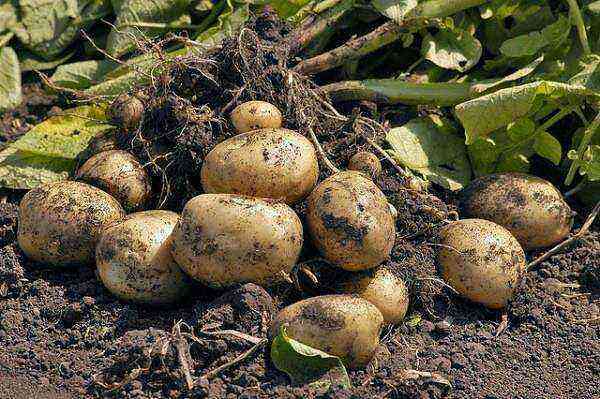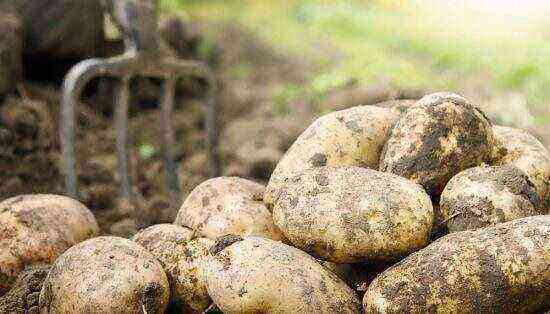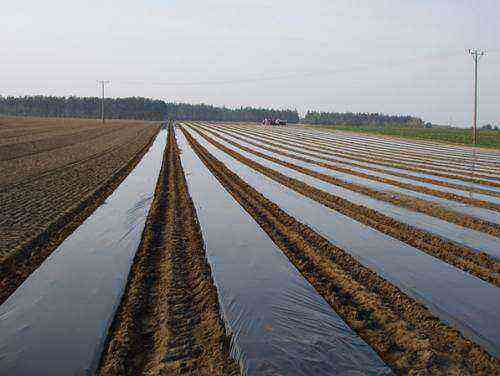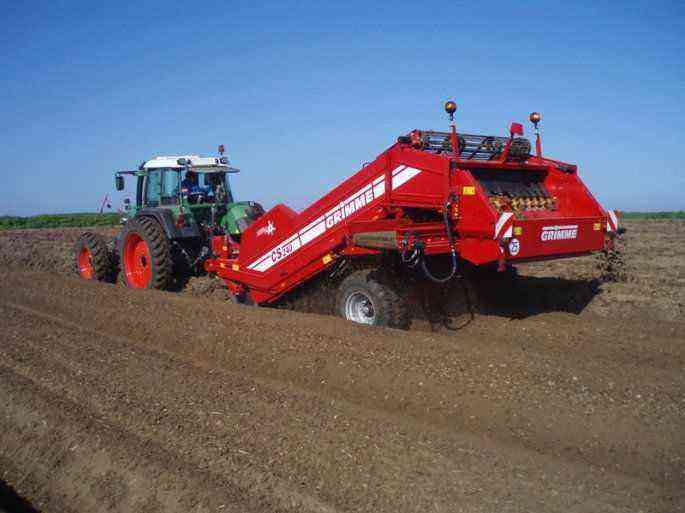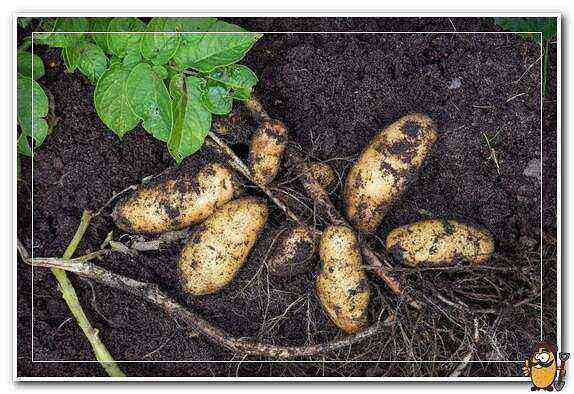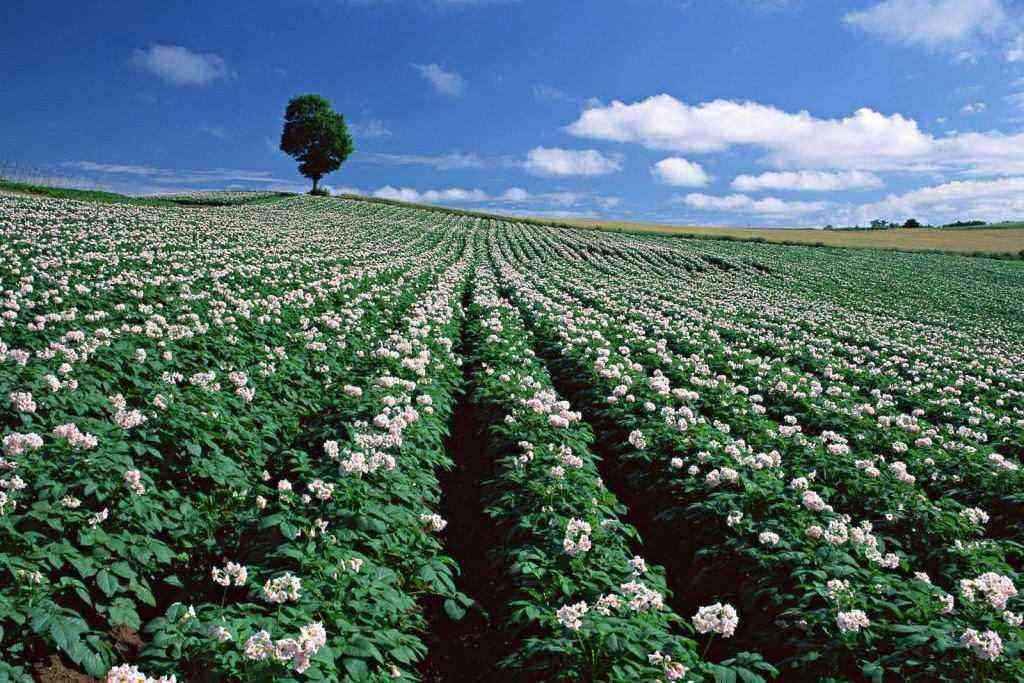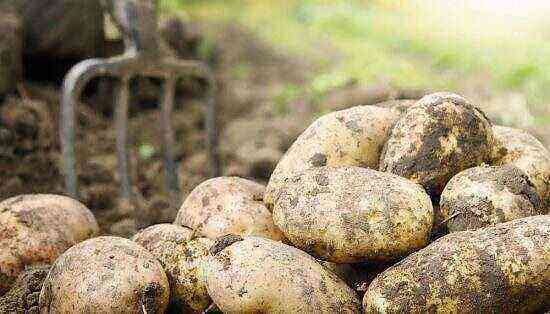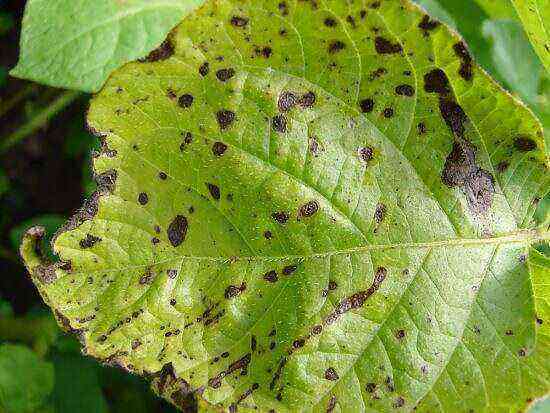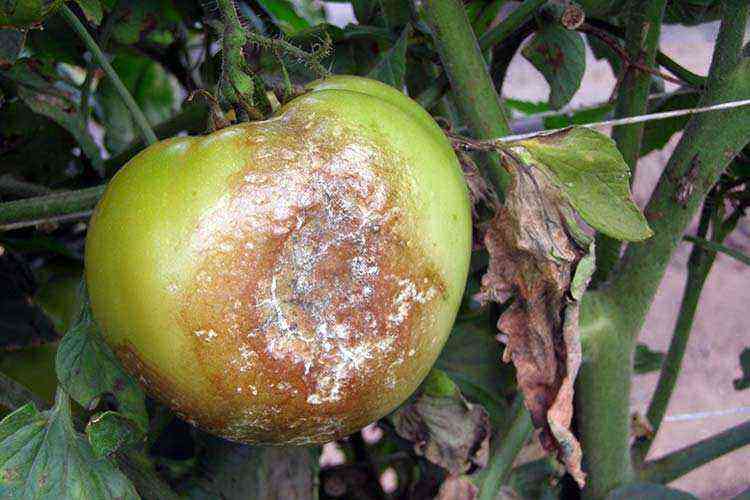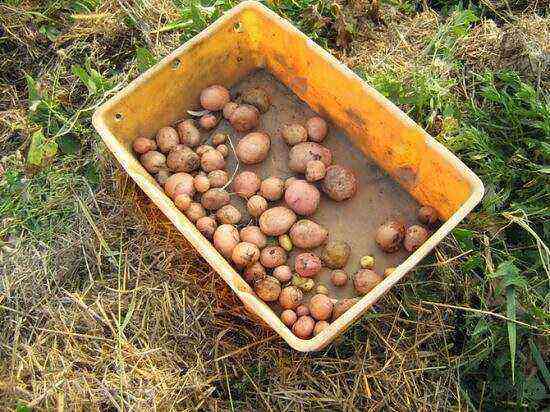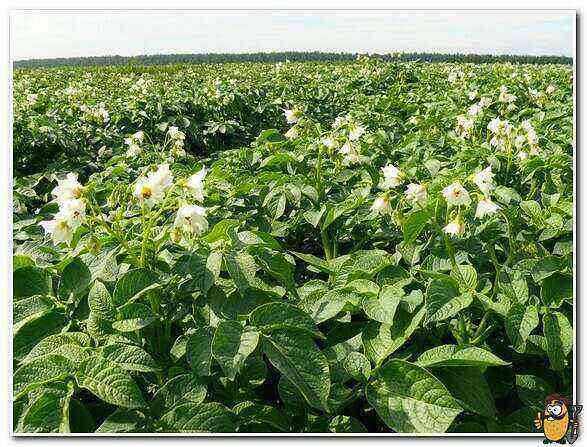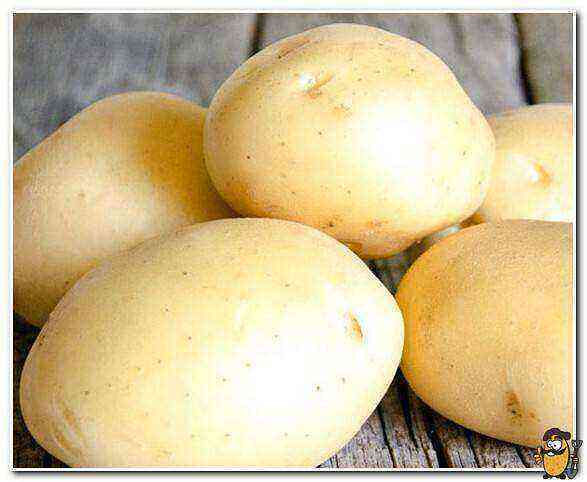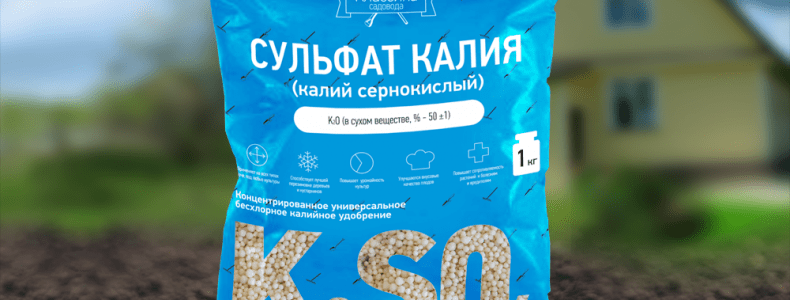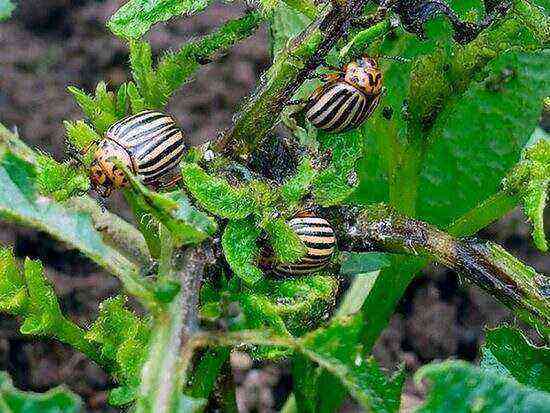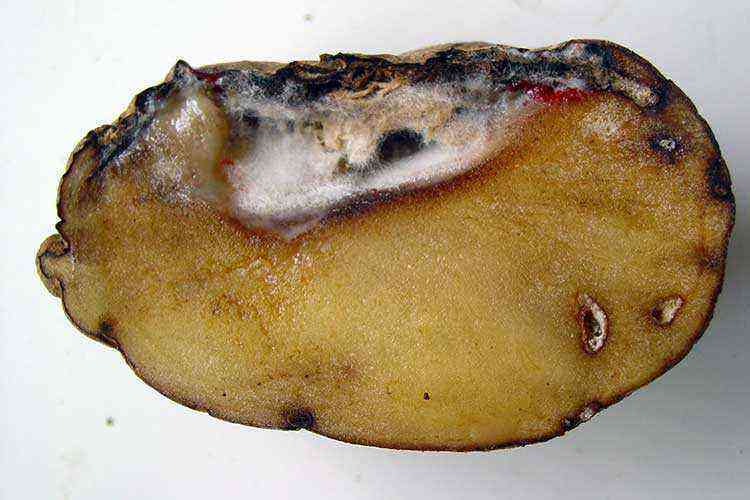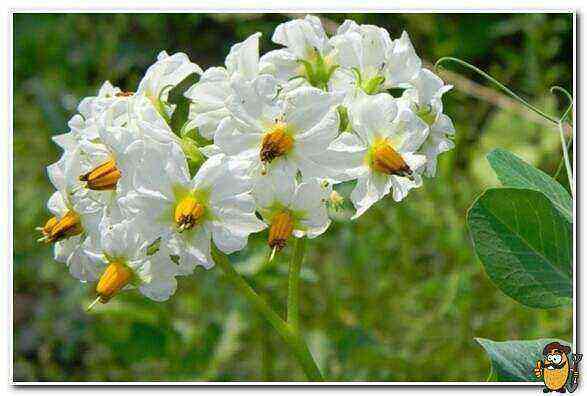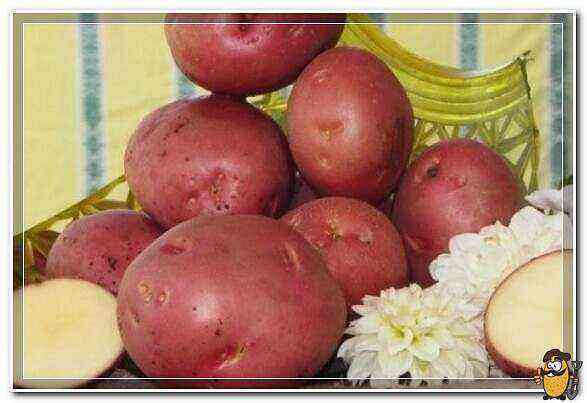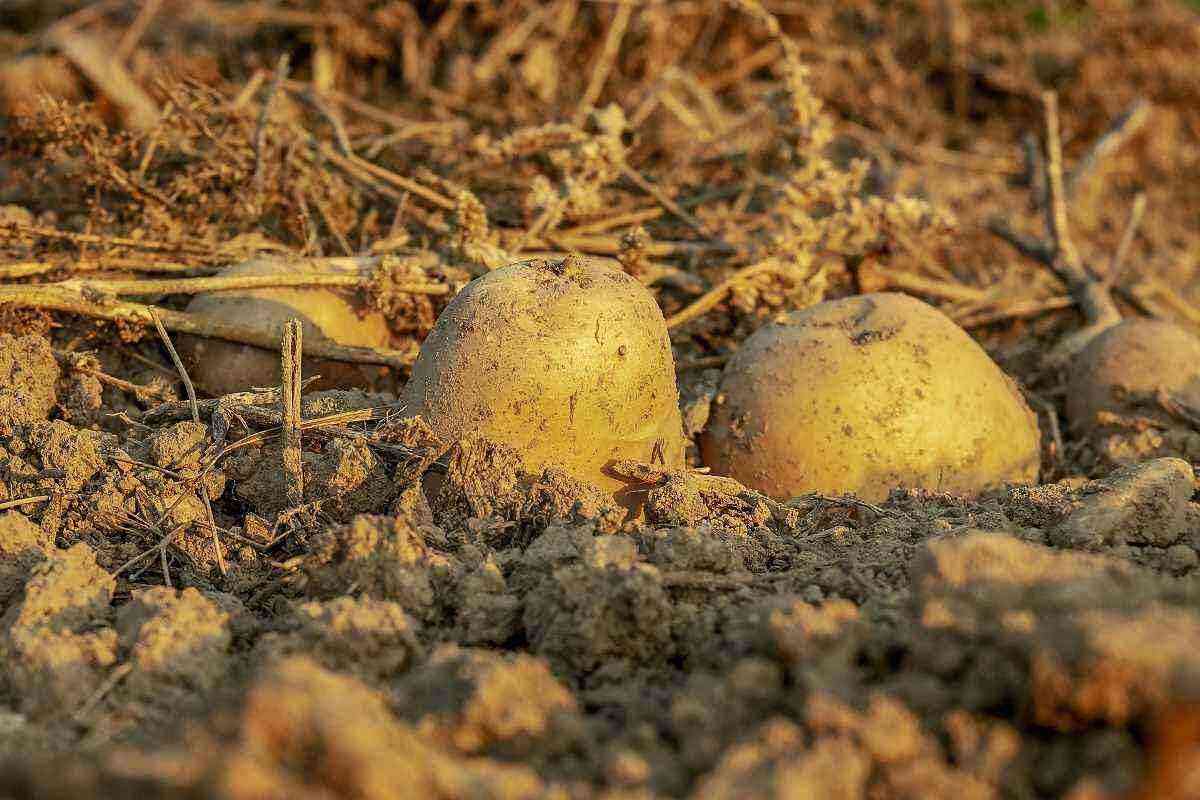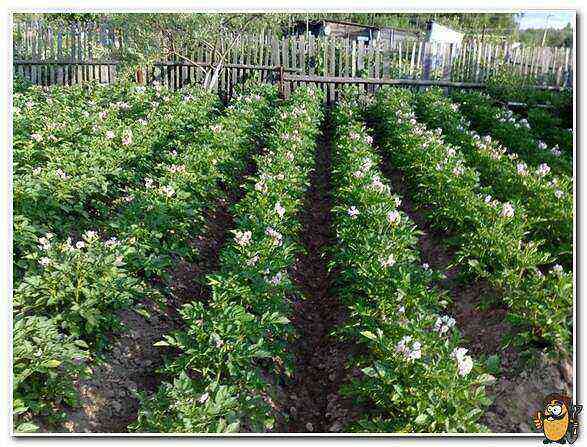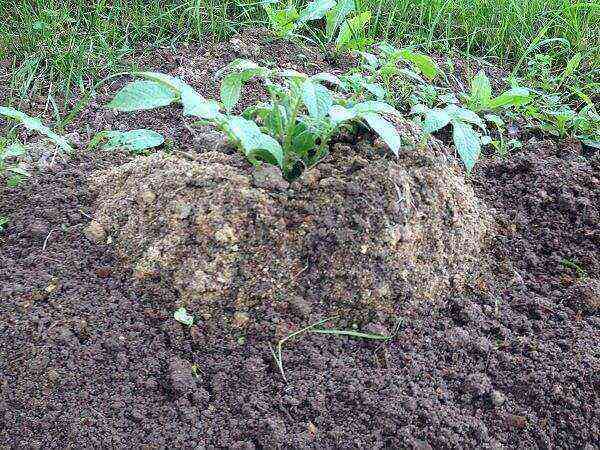In the experiment, the initial material of tubers was taken from apparently healthy bushes with a clear absence of disease symptoms, and the strict correspondence of the morphological parameters of the selected samples to the varietal indicators was taken into account.
Methods of apical meristems and microclonal propagation in vitro were used for research, since they are used by authors all over the world.
The research was carried out on the basis of the Federal State Budgetary Scientific Institution “SibNIISHiT” in the laboratory of biotechnological methods of selection and seed production of agricultural crops in the village of Bogashevo. Observations of the growth and development of potato plants were carried out according to the “Research Methodology for Potato Culture” (NIIKH, 1967)
Potatoes “ANTONINA” – Early variety. Dining purpose. Included in the State Register of the SD of the Russian Federation in 2005 for 1, 4, 9, 10, 11 and 12 regions (Fig. 16).
Distinctive features: The variety combines early maturity, high yield, marketability, high starchiness of tubers, high plasticity – it is able to give high yields in various soil and climatic conditions already on the 60th day 20 t / ha (total yield 42-56 t / ha, maximum – 90 t / ha).
Fig. 1 Antonina potato tubers
Suitable for early summer consumption and deep freezing. Responsive to planting sprouted tubers according to a thickened scheme of 70 x 20 x 25 cm and to the full rate of organic, mineral fertilizers with an increased dose of potassium. The variety is resistant to cancer, relatively resistant to late blight (by tops), bacterial diseases and common scab, susceptible to golden cyst nematode.
The corolla of the flower is white. The shape of the tubers is oval, the skin of the tubers and the eyes are white, small, sometimes of medium depth. The pulp is light yellow. Remove the tops 10 to 14 days before harvesting. Keeping quality of tubers is good, store at t 3 – 5 ° C. Variety value: The starch content in the tubers is 16-20%, the tasting score is 4,0 – 4,5. In 2007, this variety received a gold medal from the All-Russian Exhibition Center.
Table 1. Economic – biological characteristics and properties of Antonina potatoes
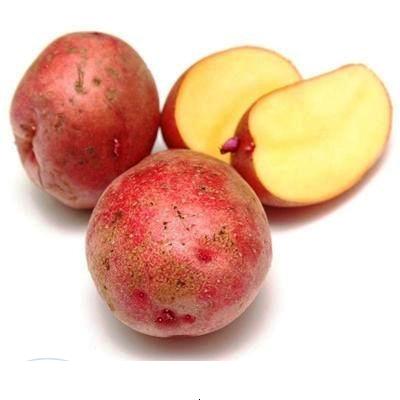
Fig. 2. Potatoes “ANNIVERSARY”
Potatoes “JUBILYAR” – Early variety. Dining purpose. Included in the State Register of the SD RF for 10 and 12 regions.
Distinctive features: the variety combines high yield, early maturity, marketability of tubers. Resistant to potato cancer, golden potato nematode, viral diseases, common scab, phytophthora on tubers.
Suitable for early summer consumption. It grows best on light sandy loam soils, well filled with organic and mineral fertilizers. In dry periods, it requires watering. Phytopathological cleanings are required to remove bacterial diseases, treatment with fungicides to prevent late blight. The corolla of the flower is red-violet. The shape of the tuber is rounded-oval, the peel is red with more brightly colored superficial eyes, the flesh is yellow. Remove the tops 10-15 days before harvesting. Store at a temperature of 1,5 – 2,5 ° C.
Thermotherapy, isolation of the meristem and cuttings of test-tube plants
Undoubtedly, the improvement of potatoes is a complex complex process that combines the use of both field and laboratory methods.
For the improvement of varieties and hybrids of potatoes, the search for basic clones in the field is constantly being conducted. Requirements for the plant to be selected: the plant is typical in morphological structure for the given variety, absolutely healthy in appearance, normally developed, with the number of stems characteristic of the variety. Tubers – typical morphological characteristics for a given variety without spindle-like traits, completely healthy according to visual assessment, a characteristic variety of standard-sized tubers and a transition from large to small.
The harvest of each selected clone was placed in a separate bag and stored. After the termination of the rest period, thermotherapy was performed.
For the first time, the method of thermotherapy for the recovery of potato tubers from the leaf-rolling virus was applied in England by B. Cassanis.
Thermotherapy, that is, heat treatment of tubers, carried out in a thermostat at a temperature of +37ºC for 40 days allows you to suppress the development of spherical viruses (potato yellow dwarf virus, potato leaf rolling virus), at the same time contributes to an increase in the effectiveness of the apical meristem method during recovery from XBK, SBK, MVK, PLRV, YBK, ABK viruses.
Tubers placed for thermotherapy must be free from infection, late blight, sclerotia of rhizoctonia and thoroughly washed. Potato tubers were placed in a thermostat for thermotherapy for 40 days (Fig. 3).

Fig. 3 – Laying tubers for thermotherapy
After thermotherapy, the tubers were germinated to obtain leaded sprouts 2–3 cm in size. The concentration of viruses in leaded sprouts is much lower and, probably, the zone of the apical meristem is larger than in sprouts grown in the light.
The tubers were placed on racks in a dark place at a temperature of 18-22ºC and relative humidity within 75%.
When performing this stage of potato health improvement, we used the classic Murashige-Skuga nutrient medium for growing meristems. Macro- and micro-salts, vitamins, organic substances, and growth regulators were used as the main ingredients of nutrient media. The mineral composition of nutrient media should provide a balanced and sufficient supply of the necessary nutrients to the meristems. During the experiment, it was proved that for the growth of potato explants, the optimal reaction of the medium is pH 5,7.
The apical meristems were isolated in a microbiological box sterilized using bactericidal lamps. The instruments used for dissection (tweezers, scalpels, needles, etc.) were sterilized before each dissection by immersion in alcohol followed by firing over an alcohol lamp.
Shoots were separated from thoroughly washed tubers and sterilized in alcohol for 10 minutes, followed by washing three times with sterile H2A. Sterilized sprouts were placed in a sterile Petri dish and a few drops of autoclaved water added to prevent them from drying out. Before isolation, the integumentary leaflets were removed from the apex of the sprout, sequentially exposing the lateral and apical meristems with primordial leaflets. This operation was performed using a dissecting needle under a binocular loupe.
A meristem, 100–250 µm in size, without leaf primordia (primordia) was dissected out with an ordinary thin needle clamped into a holder (Fig. 4).
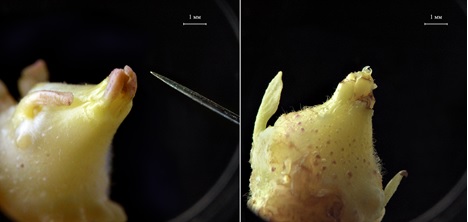
Fig. 4 – Isolation of the meristem
It is possible to isolate both the apical and lateral meristems. The meristem at the tip of a needle was transferred to the surface of the culture medium into a test tube, closed with a stopper over the burner flame, and placed in a rack. After filling, the rack with test tubes was closed with a cellophane cap to prevent the media from drying out, signed and placed in a light chamber (Fig. 5), with constant light and moisture-temperature regimes. The temperature must be maintained at 20 – 240С, illumination 8 ± 2 thousand lux, photoperiod 16 hours, humidity 70%. An important condition for good regeneration of plants from the meristems is a reduction in the period between their isolation and placement in a room with a constant regime. The time from isolation to obtaining a real plant with a developed root system and 5-6 leaves is from 70 to 150 days. In the course of this work, the process of isolating the apical meristems of potatoes was worked out.
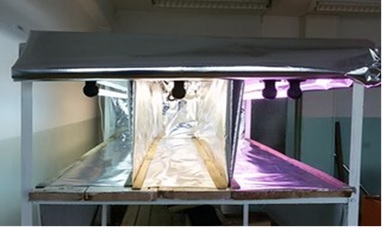
Fig. 5 Automatic rack for studying the light mode of growing test-tube plants

Fig. 6 – Regeneration of the potato meristem
Accelerated reproduction of potatoes in culture in vitro
Accelerated propagation by microclonal cuttings in culture in vitro on an artificial nutrient medium – one of the most effective methods that allows you to quickly get the required number of plants free from infections. During this stage, we cut a full-fledged test-tube plant into parts (cuttings). The cuttings were transplanted into tubes with a nutrient medium. Propagation by cuttings is based on the suppression of apical dominance and activation by removing the apical shoot of the axillary meristems, from which the shoot develops when placed on a nutrient medium. Cuttings were carried out with an interval of 21 – 28 days (Fig. 7).

Fig. 7 – Micro-cutting of plants
The course of work was as follows: test-tube potato plants were taken out of a test tube in a laminar with sterile tweezers, placed in a Petri dish, cut into pieces with a scalpel (a section of a stem with a leaf and an axillary bud), while the part of the stem above the leaf should be 2 – 3 times smaller, than the part below the sheet. Strict sterility was observed. Cuttings were planted on a nutrient medium in pre-prepared test tubes. To prevent the ingress of microorganisms into the test tube, the neck of the test tube and a cotton plug were burned in the flame of an alcohol lamp. Tubes with cuttings were placed on a culture rack with a different light spectrum and a 16 hour photoperiod.
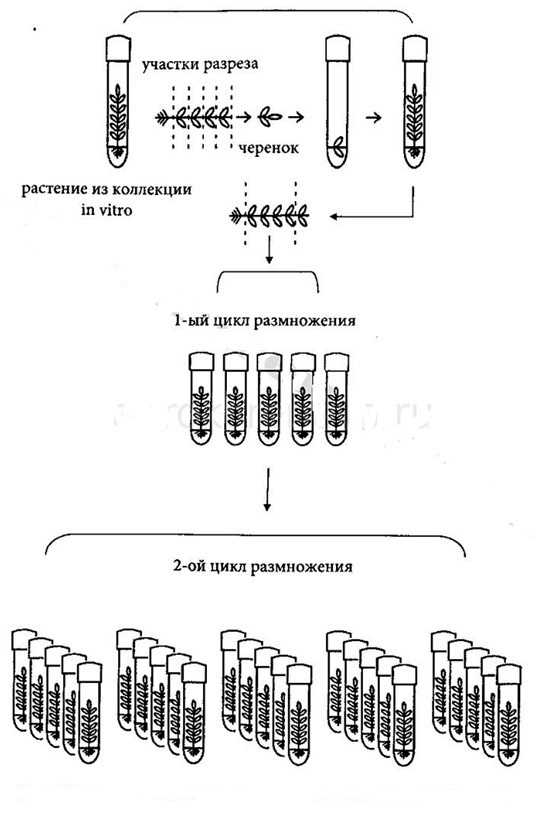
Fig. 8 – In vitro potato propagation scheme
Study of different light regimes for growing potatoes in test tubes in laboratory conditions
In in vitro culture, potato plants were cultivated under artificial lighting conditions. In the works of R.A. Karnachuk, V.Yu. Dorofeeva, Yu.V. Medvedeva showed that light of different spectrum regulates growth processes in potato plants in vitro. The study of the influence of the quality of light on growth processes is an important factor and is used to select the optimal lighting regime.
Plants were maintained in vitro on agar nutrient medium as prescribed by Murashige and Skoog, modified by NIIKH. The plants were cultivated at a temperature of +24 ± 1 ° C, a photoperiod of 16/8 hours light / dark. Fluorescent lamps of brands OSRAM and LED TELEFUNKEN.
OSRAM
- 36W / 840-LUMILUX COOL WHITE (white cold);
- L 36W / 765 COLD DAY COLOR.
TELEFUNKEN
- TLF TB203 Linear LED 18W 2700K
- TLF TB203 Linear LED 18W 4200K
Fluorescent lamps are glass tubes, at the ends of which there are special G13 plinths. The tube itself is filled with a gas – a phosphor. It glows when exposed to ultraviolet radiation from the discharge. Accordingly, the larger the tube size, the higher the lamp power. The power of Russian and European lamps is different. For example, a lamp made in the Russian Federation had a power of 20 W, while Philips or Osram lamps of the same size had a power of 18 W. So it is with the rest of the powers 40 and 36 W, 58 and 80 W.
A 20 W fluorescent lamp gives the illumination of a 100 W incandescent lamp. This is one of the reasons for the dominance of this type of lamps, their efficiency. The economy can be attributed to their long service life, which can range from 2000 to 20 hours, in contrast to 000 hours of conventional incandescent lamps. A fluorescent light source can have different shades of light that change perception. From yellow, which is often called “warm”, to blue, which is called “cold” light. The color rendition of lamps is measured in Kelvin, fluorescent lamps range from 1000 to 1800 K.
Luminescent photolamps are especially strong in the blue and red regions of the spectrum and perfectly accompanies plant phytobiological processes. Using Fluora lamps helps plants stay healthy and speeds up plant growth.
Osram Fluora lamps are available in five sizes, 15, 18, 30, 36 and 58 watts. The most popular are 18 and 36 W, since a fairly large number of lamps are presented for them on the electrical equipment market. The G13 lamp base is one of the most common sockets for tubular fluorescent lamps.
Pros of fluorescent lamps:
- Various luminescence spectra
- Availability of colored lamps
- The presence of special lamps (bactericidal, ultraviolet)
Cons of fluorescent lamps:
- Use of chemically harmful substances (disposal costs)
- Mandatory presence of a throttle device to start the lamp
- Possible flickering when using electronic ballasts (no flickering when using electronic ballasts).
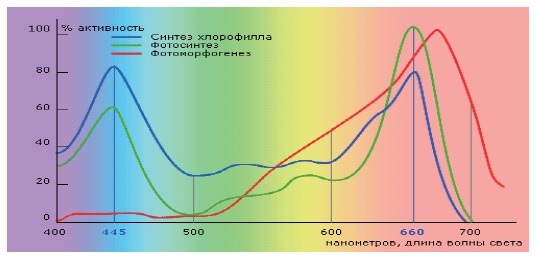
Fig. 9 – Peaks of activity of the main cycles of plant life
The graph (Fig. 9) shows the peaks of the activity of the main life cycles of plants. Plants need a small part of the entire spectrum of sunlight, passing between 440-450 Nm – blue and 620-660 Nm – red spectra. The rest of the spectrum has little effect on plant development. Conventional light sources are focused on the sensitivity of the human eye and contain mainly green and yellow light, which is practically useless for plants. The required spectrum in ordinary lamps contains very little, and in order to obtain the required level of illumination, it is necessary to increase the power of the entire luminous flux. In this case, not only 40 – 60% of the luminous flux are unnecessary spectra, but also an imbalance is observed in the plant spectra, which affects the development of the plant as a whole. Therefore, the use of common light sources for artificial lighting or supplementary lighting of plants often does not bring the desired result, while requiring high energy costs.
The use of fluorescent lamps gives the best price-quality ratio in crop production. When choosing lighting, you need to take into account the needs of a particular type of plant, its life span, the distance from the lighting to the top of the plant and the actual parameters of the fluorescent lamp.
Recent developments in the LED industry have made it possible to produce inexpensive, bright, long-life phyto-light sources. Big advantage LED sources is the possibility of obtaining monochromatic radiation in the phytoactive part of the spectrum. The attractiveness of LEDs for indoor plant growing is due to many factors. Among them: low electrical power, no ballast, low heat generation, which allows you to install LEDs close to plants without the risk of damaging them. It should also be noted that the use of LEDs reduces evaporation, leading to lengthening periods between waterings.
There are several active parts of the spectrum: for chlorophyll and carotenoids… Therefore, an LED luminaire can combine several colors that overlap these phytoactive areas.
Recommendations for the optimal combination of LEDs vary widely. For example, one source recommends the following proportion of “12 660 nm red LEDs plus 6 612 nm orange LEDs and one 470 nm blue LED” to maximize plant growth and health.
There are also publications in which it is recommended to give priority to blue LEDs (with a wavelength in the middle of the spectrum of 400 – 500 nm) for the period of vegetative growth. For the growth of fruits and flowers, it is recommended to increase the proportion of LEDs with a deep red hue (with a wavelength of about 660 nm). It should be noted that accuracy is more important when choosing the wavelength of red LEDs than when choosing blue spectrum LEDs. Standard 630 nm red LEDs are ineffective.
Red phyto-LEDs have a crimson, velvety glow. Studies have shown the usefulness of additional illumination of plants with LEDs of the infrared and ultraviolet spectrum. Mixing red and blue light produces magenta (pink) light. Green light under artificial illumination of plants can be used for aesthetic purposes to neutralize the unpleasant purple glow of phyto-LEDs or to facilitate visual control of green shoots and soil conditions, since the human eye can best distinguish details in the green part of the spectrum. The photosynthetic efficiency of green light is extremely low due to the high degree of reflection of the rays of this spectrum by chlorophyll.
The power of LEDs produced using the old technology was hundredths of a watt, which did not allow them to effectively replace gas-discharge lamps. Modern advanced LEDs and LED arrays have power in the tens or even hundreds of watts, which makes them a worthy alternative to gas-discharge lamps. The power and efficiency of phyto-LEDs continues to grow. The previous generation LEDs were 1W. Now in phyto-luminaires, 3 W and 5 W LEDs are widely used. With the growing demand for light-emitting diodes of the “plant spectrum”, combined LEDs (Mix Color), which are more convenient for assembling lamps, appeared on sale, in which several separate emitting crystals with different wavelengths are installed in one housing, for example, 660 nm and 445 nm in proportions 2 : 1 or 1: 2, as well as full spectrum LEDs, in which a spectrum favorable for plant growth is achieved through the use of a special phosphor.
In an LED, unlike an incandescent or fluorescent lamp, electric current is converted directly into light radiation, and in theory this can be done with almost no loss. Indeed, the LED (with proper heat dissipation) heats up little, which makes it indispensable for some applications. Further, the LED emits in a narrow part of the spectrum, its color is clear, and UV and IR radiation are usually absent. The LED is mechanically strong and extremely reliable, its service life can reach 100 thousand hours, which is almost 100 times longer than that of an incandescent light bulb and 10 times longer than that of a fluorescent lamp. Finally, the LED is a low-voltage electrical device, and therefore safe.
When analyzing the data in Table 5, it was found that the length of the stem of Yubilyar potato plants at later stages of development is maximum when the plants are grown under fluorescent lamps L 36W / 765 (cold day color). Plants grown under fluorescent lamps L 36W / 765 (cold day color) and FLUORA L-36W / 77 take the leading position in the number of new leaves formed on the stem.
Somewhat different patterns are found when growing potatoes of the Antonina variety. In terms of stem length, no statistically significant differences were found, and in terms of the number of leaves, the maximum values are typical for plants grown under fluorescent lamps FLUORA L-36W / 77.
The analysis of the costs for the purchase and operation of the studied types of lamps was carried out.
Table 7 – Characteristics of the studied types of lamps
Taking into account the characteristics given in Table 7, the 16-hour period of lamp operation daily and the number of lamps used to illuminate one section of the experimental rack, the costs for 1 month of lamp operation were calculated. They amounted to 97,6 rubles. for lamps Osram Fluora L 36 W / 77, 37,8 rubles. for Osram 36w / 840-lumilux cool white lamps, 38,7 rubles. for lamps Osram L 36W / 765 cold day color, 46,5 rubles. for linear LED lamps 18W 2700K and 53,2 rubles. for linear LED lamps 18W 4200K.
Thus, according to the results of studies and calculations, the best option for growing test-tube plants of the Yubilyar variety is the Osram L 36W / 765 lamp of cold daytime color.
Because at the stage of growing plants in a test tube for subsequent cuttings, the most important indicator is the number of internodes, which is directly related to the number of leaves; for growing potato plants of the Antonina variety, the Osram Fluora L 36 W / 77 lamp is the best option.
Study of the use of biological fertilizer Gumostim in different concentrations to improve the adaptation of potatoes to growing in soil
An effective tool for creating high-quality seed material is a directed change in the growth and development of plants using growth regulators that have anti-stress and immunomodulatory properties that contribute to an increase in plant productivity and resistance to biotic and abiotic factors.
Among the growth regulators, a modern highly effective drug is Gumostim, which increases the vigor of germination and germination of seeds; resistance of plants to unfavorable environmental conditions (drought, early frosts, excess and lack of mineral fertilizers), accelerates the growth and development of plants, their root system and aboveground mass; restoration of weakened and damaged plants, promotes the activation of metabolism in the plant and the supply of nutrients from the external environment; increased respiration and processes of synthesis of new substances; the formation of strong and healthy vegetable seedlings; earlier and more friendly flowering, ripening and fruiting; the formation of larger fruits; the formation of a high yield at an earlier date; obtaining environmentally friendly products with high taste and vitamin value, reduces the content of nitrates; the incidence of late blight, rhizoctonia, scab and other fungal diseases in plants.
General properties of Gumostim:
- Gumostim is a dark brown liquid with a specific odor. Let’s well dissolve in water. Exchangeable acidity pH 7-9. Mass fraction of humic acids 2,4-2,7%.
- Gumostim belongs to the 4th hazard class (low-hazard substance). The content of impurities of heavy metals in Gumostim does not exceed the MPC (APC) for “clean” soil intended for the cultivation of agricultural crops.
- The effective specific activity of natural radionuclides in Gumostim does not exceed the average levels of their content in arable soils on the territory of the Russian Federation. Fertilizer is environmentally friendly, non-toxic, does not exhibit mutagenic, teratogenic, embryotoxic activity, no lethal dose has been found when ingested. Gumostim is not carcinogenic, does not contain genetically modified products.
- In the process of transformation and decomposition of fertilizers, metabolites hazardous to human health and the environment (soil, water, air) are not formed. Gumostim does not introduce pathogenic microflora, does not lead to an increase in the content of toxic and hazardous compounds, natural radionuclides.
- Plant products after application of Gumostim are used for food purposes without restriction.
Consumption rates of Gumostim:
Gumostim is used in the form of a working solution containing 0,001% humic acids for seed treatment, spraying of growing plants of greenhouse crops and watering the soil. Tables 15-17 show the norms of the working solution of Gumostim for different methods of its use for potatoes in open and closed (greenhouse) grounds.
Preparation of working solution
The working solution is an aqueous solution of Gumostim containing 0,001% humic acids. The working solution is obtained by mixing the Gumostim concentrate containing 1% humic acids and water.
Add the required amount of Gumostim concentrate to a container with a measured amount of water and mix thoroughly for 2-3 minutes. The working solution is ready for use. It is advisable to use the working solution within 2 days. The unused remainder of the working solution does not require special methods of neutralization and can be spilled into the field, drained into the sewer, etc.
To prepare the working solution, water is used that meets the standards for drinking water. Mixing of Gumostim and water is carried out at an air temperature from +10 to +30◦C.
It is recommended to prepare the working solution in a clean plastic, glass or metal container. Gumostim is measured with a measuring container made of glass or plastic.
The use of industrial water, water from nearby reservoirs, lakes for the preparation of a working solution of Gumostim in farms can lead to a change in the composition and biological activity of the drug.
The technology of application of Gumostim provides for the use of standard technical means in agricultural production and ordinary hand tools in personal subsidiary plots during agrochemical work.
In agricultural production, pre-sowing treatment of seeds of cereals, legumes, industrial crops, potatoes is recommended to be carried out by incrustation (semi-dry dressing) in dressing agents that are usually used on farms (PSSH-5, PS-10A, Mobitox-Super, PS-30, KPS -10, KPS-20, KPS-40, etc.). The seeds of vegetable, flower and ornamental crops are soaked in containers suitable for these purposes. Root top dressing is recommended to be carried out through drip irrigation systems and sprinklers, foliar top dressing – using boom, fan, knapsack sprayers. The calculated volume of water is poured into the tank of a sprayer or a watering machine with the mixing device turned on, the required amount of Gumostim is added, the solution is mixed and top dressing is carried out.
Presowing seed treatment and plant feeding can be carried out both independently and in tank mixtures with single-component or complex mineral fertilizers and pesticides.
In personal subsidiary farms, feeding is carried out using all types and systems of irrigation or spraying (traditional watering, drip irrigation, irrigation, etc.) – watering cans, knapsack sprayers and other manual equipment. The calculated volume of water is poured into the watering can (sprayer tank, etc.), the required amount of Gumostim is added, the solution is mixed and top dressing is carried out. Plants are sprayed in the morning or evening in dry, calm weather, evenly wetting the leaves.
When using Gumostim, special training of the user and special equipment is not required.
Experimental design and research results
The objects of the study were two-week-old potato seedlings of two varieties: Antonina and Yubilyar, growing in plastic boxes.
The experiment was carried out according to the following scheme:
- Control – potato plants treated with water;
- Potato plants treated with 0,001% Gumostim solution;
- Potato plants treated with 0,002% Gumostim solution
All over the world today, the extraordinary effectiveness of foliar dressing is recognized. It is really very beneficial to use them, since foliar dressing has a huge effect on plants.
During the experiment, the plants in the boxes were sprayed with Gumostim solutions. To prevent the solution on the leaves from drying out quickly (this can hinder the entry of nutrients into the leaf), spraying was carried out late in the evening, when the air humidity is higher. When foliar top dressing, they tried to achieve uniform and complete wetting of the leaves, including the processing of the lower side of the leaf blade.
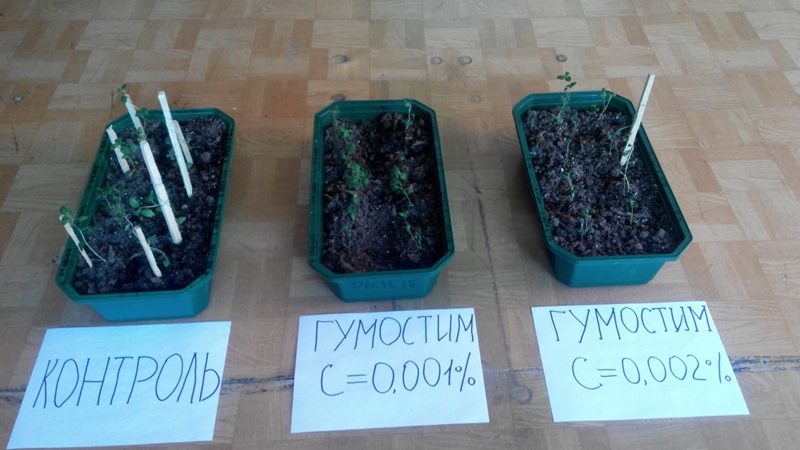
Figure 10 – Study of the effect of Gumostim on potato plants at the stage of adaptation to soil
Table 13 shows that Gumostim accelerated the growth of Yubilyar potato plants. The greatest effect was exerted by a concentration of 0,001%.
Gumostim did not have a statistically significant effect on the growth acceleration of potato varieties Antonina (Table 14). Only a tendency to an increase in this indicator was revealed when using Gumostim at a concentration of 0,002%. Perhaps this is due to the insufficient duration of the fertilizer exposure. This issue requires further study.
Study of various options for vessels for growing plants at the stage of plant adaptation to soil
In the transition from the cultivation of plants in a test tube culture to obtaining the original tubers, it is important to choose the method of accelerated reproduction of the original plants in seedling culture. One of the most effective methods is the composition of the substrate used. High-moor peat with a low degree of decomposition and ash content of 11 – 20% was used as a substrate for growing seedlings. Practice has shown that good rooting and plant growth ensures the introduction of the components indicated in Table 12 into the peat. Before adding the additives, one liter of a slightly pink solution of potassium permanganate was spilled into each box with peat. Neutralization of peat and mixing it with mineral additives should be carried out very carefully to ensure their uniform distribution, the pH of the finished peat is 5,5-5,8. Then the peat was moistened with water and covered with plastic wrap for 3-5 days for “ripening”, after which it was used for planting.
The use of fine vermiculite (from 2 to 10 mm) in pure form or as a component of peat substrate (up to 40%) for rooting cuttings can significantly improve the characteristics of the planting mixture. Increases porosity and friability, which means air permeability. The roots developed evenly throughout the earthen coma. Vermiculite has a high ion-exchange capacity and retains positively charged ions of potassium, magnesium and other nutrients, gradually giving them to the plant.
Test tube plants aged 28–30 days were planted in various vessels on a prepared peat substrate. Three different types of vessels were used to grow potato seedlings from test-tube plants:
– seedling cassettes (400 * 205 * 95 mm)
– peat pots (110-110 mm)
– plastic boxes (400 * 205 * 95 mm)
Boxes
The most ancient way of growing seedlings is planting seeds in a common box, followed by picking.
Pros: More seedlings can be grown in a box than in individual cups; it is convenient to turn it over; the box does not require additional devices for transportation.
Cons: In the process of picking or planting seedlings in the beds, there is a high probability of damage to the roots (which means a delay in growth and fruiting.
Plastic cassettes
Plastic cassettes are small containers sealed together with drainage holes of varying lengths and widths. They are very easy to use: you just need to fill each cell with potting soil and plant seeds or seedlings.
Pros: Easy to fit by cutting with scissors; are inexpensive, but serve for a long time; lightweight and compact cassettes; already have holes for good drainage; the seedlings are easily removed from the cells.
Cons: “Large format” cassettes are inconvenient for transportation, because they are very fragile and can crack under the weight of the earth and plants; due to the fact that the cells are fastened together, when removing one seedling, you can inadvertently disturb the earthen lump of another; not every culture has enough room in a small cell.
Peat cups
Peat cups are very popular, especially with supporters of organic farming, as they are made from environmentally friendly materials and are easily biodegradable in the ground. It is often recommended to use peat pots and glasses at the second stage – for transplanting (picking) seedlings, and not for sowing seeds.
Pros: Strong and safe, does not contain toxic substances; the walls of the cups are porous, allow air and water to pass through, not allowing the roots to “sour”; seedlings are planted in a permanent place directly in the pot, which means that the root system is not injured at all; seedlings take root almost 100%; decomposing peat serves as an additional fertilizer.
Cons: Not all peat cups on the market are of good quality; have a tendency to get wet; not cheap; can get moldy; in peat containers, the soil loses moisture faster, which means that you need to closely monitor the seedlings and prevent drying out.
At this stage of the work, the plants were removed from the test tube with tweezers immediately before planting, carefully treated with a growth substance consisting of talc, heteroauxin, and vitamin B1, and planted into a vessel.
The planted plants were placed on shelves and covered with plastic wrap for better rooting.
In the first days, the plants were ventilated by shaking the film; 5 days after planting, the film was removed. The optimal mode of growing seedlings in an equipped room: air temperature 18 – 24°С, illumination 6 – 10 thousand lux, light period 16 hours, air humidity 85%.
In addition to the length of the plants, the general condition of plants and their survival rate were also taken into account. The survival rate of plants in all variants was 100%. In the variant with seedling cassettes at later stages of development, the plants did not have enough space for the full fixation of roots and stems; the plants became thinner and bent to the surface of the substrate. In variants with plastic boxes and peat pots, these effects were not observed. Thus, the seedling cassettes cannot be recommended for growing potato seedlings at the stage of adaptation to the soil.
Along with the study of the influence of the type of vessel on the growth and development of plants, the calculation of the economic attractiveness of various types of vessels for seedlings was carried out.
Taking into account the price of vessels (box – 75 rubles, cassette – 10 rubles, peat pot – 5 rubles), the total cost of the vessel and substrate for growing 10 potato plants was calculated, which amounted to 172 rubles. 45 kopecks for a box, 22 rubles. 28 kopecks for cassettes, 111 rubles. 40 kopecks. for a peat pot.
Based on the above data, the best option out of the three investigated is a peat pot.
